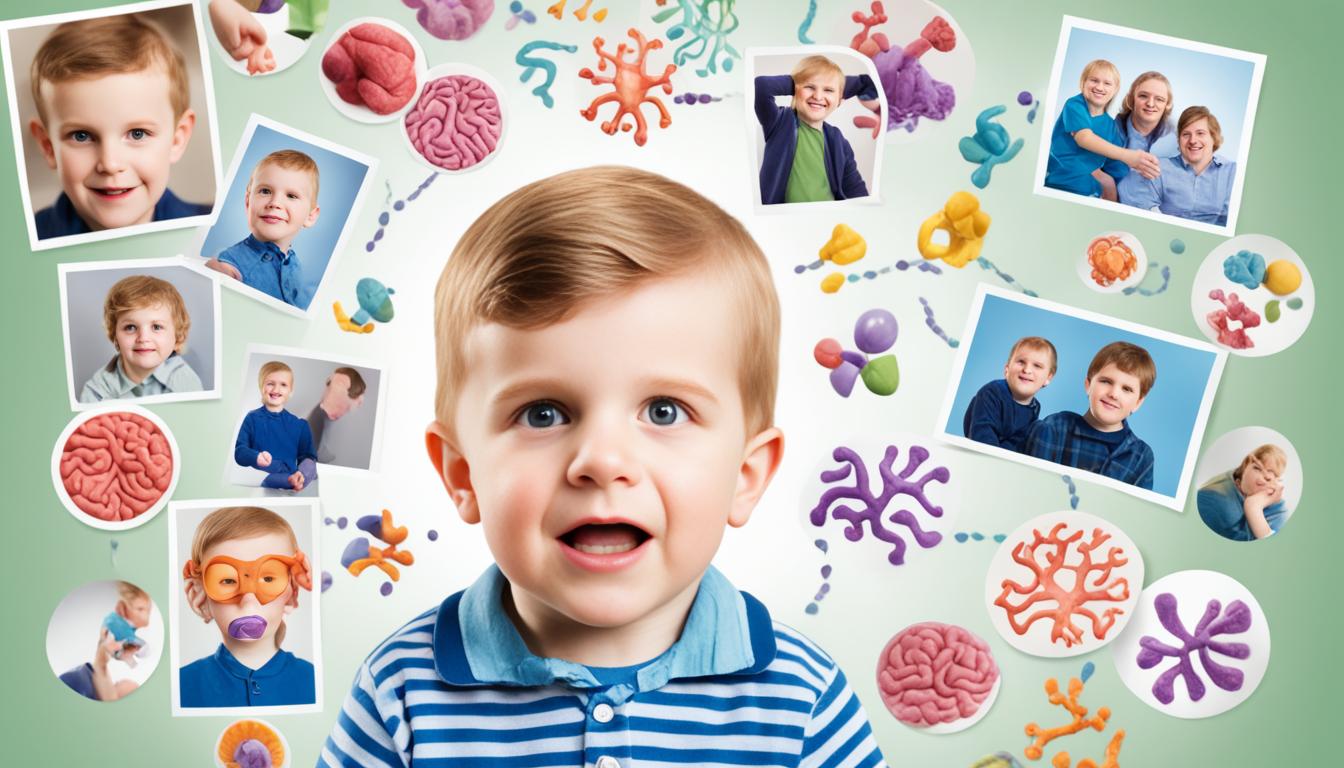Rett syndrome is a condition that impacts girls mostly. It causes a big step backward in their early development. This affects how they move, think, and talk. The key problem is a change in the MECP2 gene.
Girls with Rett syndrome lose the ability to use their hands with purpose. They have problems walking and talking. They might also find it hard to breathe. Thinking becomes difficult due to this genetic change.
Diagnosing Rett syndrome follows a set of rules that help doctors tell if someone has it. This includes close physical checks and sometimes a genetic test. These steps are taken to make sure the diagnosis is correct.
Currently, there is no cure for Rett syndrome. But scientists are looking into various ways to help. One option they are excited about is using stem cell therapy. This treatment aims to make the affected person move and think better.
Key Takeaways:
- Rett syndrome is a neurodevelopmental disorder primarily affecting girls.
- It is caused by a mutation in the MECP2 gene, impacting motor, cognitive, and communication skills.
- Symptoms include loss of hand skills, motor abnormalities, communication difficulties, breathing abnormalities, and cognitive impairments.
- Diagnosis relies on internationally accepted criteria, including physical examination and genetic testing.
- Stem cell therapy is being researched as a potential treatment option for Rett syndrome.
Overview of Rett Syndrome and its Symptoms
Rett Syndrome is a rare genetic disorder that mainly affects girls. It occurs in about 1 in 10,000 to 15,000 female births. This disease is linked to changes in the MECP2 gene. It leads to physical and cognitive impairments, issues in communication, and motor problems.
One key sign of Rett Syndrome is the loss of certain hand skills. This means girls might find it hard to grasp things or do coordinated actions. They might also forget how to use their hands and lose movement skills. This makes their daily lives more challenging.
People with Rett Syndrome can have varying levels of cognitive issues. But, most have significant learning problems. They might struggle with attention, memory, solving problems, and thinking in abstract ways.
Another common challenge is trouble with talking. Many with Rett Syndrome can’t speak much. They use other ways to share their thoughts, like gestures, signs, or devices that help them communicate.
Motor difficulties often make life tough for those with Rett Syndrome. They may have unusual ways of breathing. Other signs include muscle stiffness, shaking, and issues staying balanced.
The symptoms of Rett Syndrome usually start between six months and two years of age. But, the seriousness and development of these signs can differ a lot. It’s important to remember, Rett Syndrome affects each person in its unique way.
| Symptoms | Prevalence |
|---|---|
| Loss of purposeful hand skills | 100% |
| Motor abnormalities | 100% |
| Cognitive impairments | 100% |
| Communication difficulties | 100% |
| Physical impairments | Varies |
Because Rett Syndrome has many symptoms, those affected need extensive care and support.
Importance of Early Intervention and Diagnostic Process
Early action is key in helping those with Rett syndrome. It ensures they get the right help quickly. This support can improve their life outcomes by helping them build important skills.
Spotting signs of Rett syndrome early is the first step. It leads to a check-up with doctors to confirm the issue. Tests, like genetic ones, help doctors make a diagnosis.
Seeing the signs early helps parents and others know what to look for. Things like changes in skill use or how they move are signs. Getting to a doctor early is important for a full check-up, which includes tests for Rett syndrome.
Quick action and early diagnosis make a big difference. They help people with Rett syndrome get the right care. This leads to a better quality of life and helps them do their best.

